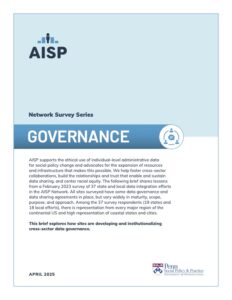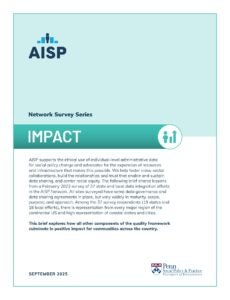Documenting the Field of Data Sharing & Integration
Since 2009, AISP has regularly surveyed our national network to learn how sites are developing and institutionalizing the five quality components that make up AISP’s Quality Framework for IDS. We also use our survey to document what data are being linked so that policy-makers, funders, and research partners can connect with potential partners (see our data matrix).
Our 2023 survey gathered information from 37 state and local data integration efforts. Survey results inform our network activities and help us capture emerging models, trends, and best practices. This year we’ve summarized findings and key examples in a five-part Network Survey Series (see below). Our 2025 network survey was recently completed and the briefs and online data matrix tool will be updated shortly.
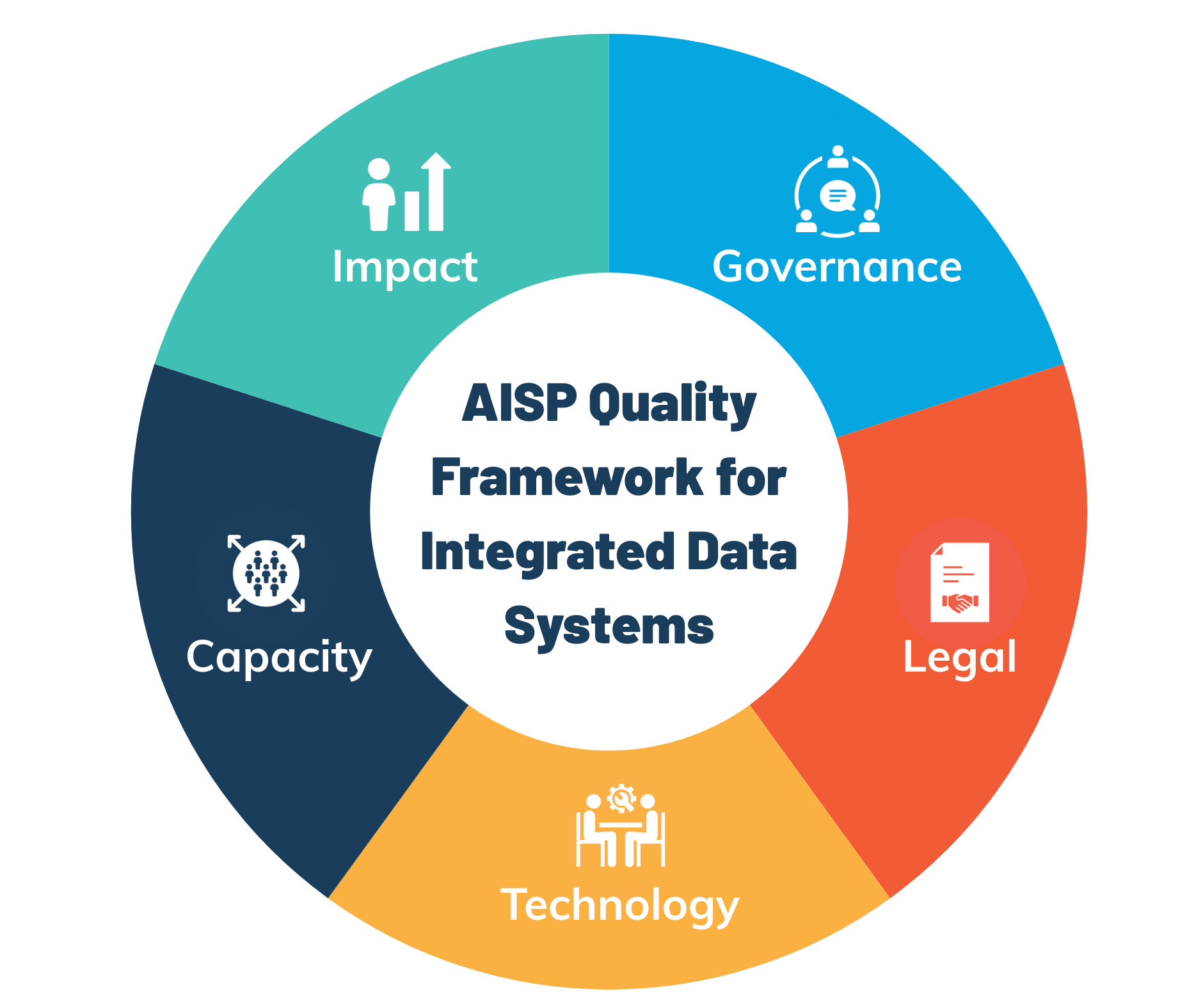
Access the Survey Briefs
Governance: The people, policies and procedures that determine how data are managed, used, and protected.
The first in AISP’s network survey series, this brief describes how 37 diverse network members are developing and institutionalizing cross-sector data governance.
Explore the brief here.
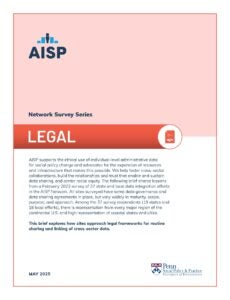 Legal frameworks: the rules, regulations, and authority that determine why, when, what, how, and with whom data can be shared.
Legal frameworks: the rules, regulations, and authority that determine why, when, what, how, and with whom data can be shared.
The second in AISP’s network survey series, this brief describes how 37 diverse network members are developing legal frameworks for cross-sector data sharing.
Explore the brief here.
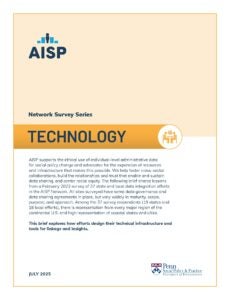 Technology frameworks: the infrastructure and tools that ensure secure data storage, linkage, and access while supporting analytic insights.
Technology frameworks: the infrastructure and tools that ensure secure data storage, linkage, and access while supporting analytic insights.
This survey brief on technology is the third installment in our Network Survey Series. The brief explores how sites across our national network approach data documentation, linkage, storage, and security.
Explore the brief here.
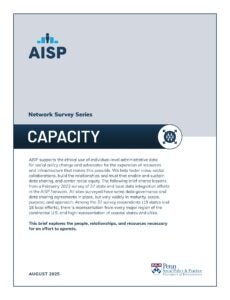 Capacity: the staff, relationships, and resources that enable a data sharing effort to operate.
Capacity: the staff, relationships, and resources that enable a data sharing effort to operate.
The fourth in AISP’s network survey series, this brief explores how sites across our national network approach this task and includes findings and key examples on staffing models and their unique benefits and challenges, strategies for building capacity and demand for data, data sharing leadership, and budgets & funding sources for data sharing efforts.
Explore the brief here

